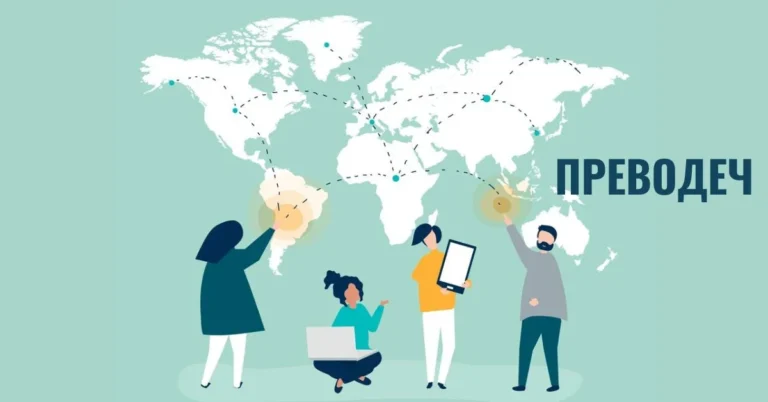In today’s interconnected world, where communication knows no boundaries, the role of translation, or преводеч, has never been more crucial. From literature to business, diplomacy to healthcare, translation bridges the gap between languages, cultures, and people. Let’s delve into the intricate world of преводеч, exploring its nuances, challenges, and profound impact.
Understanding преводеч
Origin and Meaning
Преводеч, derived from the Latin word “translatio,” encompasses more than just converting words from one language to another. It involves conveying meaning, capturing nuances, and preserving cultural context.
Evolution of Translation as an Art Form
From ancient times to the modern era, translation has evolved alongside human civilization. Early translators played pivotal roles in preserving sacred texts, disseminating knowledge, and fostering cultural exchange.
The Role of the Translator
Skills Required
A proficient translator possesses not only linguistic expertise but also a deep understanding of both the source and target cultures. Beyond mere language proficiency, empathy, creativity, and critical thinking are essential traits.
Cultural Understanding and Sensitivity
Translation goes beyond words; it involves navigating cultural intricacies and nuances. A skilled translator is sensitive to cultural differences, ensuring that the translated text resonates with the target audience.
Challenges in преводеч
Linguistic Nuances and Complexities
Languages are rich tapestries woven with nuances, idioms, and expressions unique to their culture. Translating these intricacies accurately requires more than just linguistic proficiency; it demands a profound understanding of the cultural context.
Contextual and Cultural Barriers
Translating idioms, jokes, and cultural references can be particularly challenging, as they often lack direct equivalents in the target language. Balancing fidelity to the original text with readability in the target language is a delicate art.
Techniques for Effective преводеч
Transliteration vs. Translation
While transliteration focuses on phonetic conversion, translation aims to convey meaning. Choosing the appropriate technique depends on the context, audience, and purpose of the translation.
Localization and Adaptation
Effective translation goes beyond mere word-for-word conversion; it involves adapting the text to the cultural norms and linguistic nuances of the target audience. Localization ensures that the message resonates authentically with the local audience.
The Art of Interpretation
Interpreting Spoken Language
Unlike written translation, interpretation involves rendering spoken language in real-time. Interpreters must possess exceptional listening skills, linguistic agility, and the ability to think on their feet.
Real-Time Challenges and Solutions
Interpreters face various challenges, such as accents, dialects, and rapid speech. Employing strategies like consecutive or simultaneous interpretation helps overcome these hurdles effectively.
Practical Applications of преводеч
Literary
Literary translators play a vital role in bringing diverse voices and stories to global audiences. They preserve the essence of the original work while making it accessible to readers worldwide.
Legal and Medical
In legal and medical fields, accurate translation is paramount. Translators must ensure precision and clarity, as mistranslations can have profound consequences.
Business and Marketing
In the business world, translation is essential for reaching international markets. Translating marketing materials requires not only linguistic proficiency but also an understanding of cultural nuances and consumer behavior.
Impact of Technology on преводеч
Advancements in Translation Software
Technological advancements have revolutionized the translation industry, offering tools like CAT (Computer-Assisted Translation) software and machine translation engines. While these tools enhance efficiency, human expertise remains irreplaceable.
AI and Machine Translation
AI-powered machine translation continues to evolve, offering instant translations across multiple languages. While convenient, machine translation still struggles with nuances, context, and cultural subtleties, highlighting the enduring value of human translators.
Ethical Considerations
Maintaining Accuracy and Integrity
Translators face ethical dilemmas, such as whether to prioritize fidelity to the original text or readability in the target language. Balancing these considerations while maintaining accuracy and integrity is paramount.
Handling Sensitive Content
Translating sensitive or controversial content requires tact and discretion. Translators must navigate cultural sensitivities and ethical considerations while ensuring transparency and fidelity to the original message.
The Future of преводеч
Emerging Trends and Innovations
As technology continues to advance, the translation landscape will undoubtedly undergo further transformations. From AI-driven translation to blockchain-powered verification, new tools and techniques will shape the future of преводеч.
The Human Touch in an Automated World
While technology offers unprecedented convenience, the human touch remains indispensable in translation. Empathy, creativity, and cultural understanding are qualities that machines cannot replicate, reaffirming the enduring relevance of human translators.
Conclusion
In the intricate realm of преводеч, translation transcends mere linguistic conversion; it is an art form that bridges cultures, fosters understanding, and enriches human connection. Despite the challenges posed by linguistic nuances and technological advancements, the enduring value of human translators lies in their ability to preserve meaning, capture nuances, and transcend linguistic barriers. Through their work, translators embody the essence of communication – to connect, to understand, and to unite.

